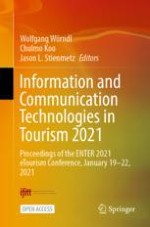
Open Access 2021 | OriginalPaper | Buchkapitel
A Model to Predict Users’ Intentions to Adopt Contact-Tracing Apps for Prevention from COVID-19
verfasst von : Imane Ezzaouia, Jacques Bulchand-Gidumal
Erschienen in: Information and Communication Technologies in Tourism 2021
Aktivieren Sie unsere intelligente Suche, um passende Fachinhalte oder Patente zu finden.
Wählen Sie Textabschnitte aus um mit Künstlicher Intelligenz passenden Patente zu finden. powered by
Markieren Sie Textabschnitte, um KI-gestützt weitere passende Inhalte zu finden. powered by